Canal Quarters Program
The Canal Quarters program hosts visitors for overnight stays in lockhouses to deepen their appreciation for the Canal’s history. Each lockhouse has been furnished to represent a time period in American history, allowing visitors to step back in time and experience life as a lock keeper once lived. Swains Lockhouse is currently being rehabilitated and will be furnished as it could have appeared in 1916, with some creative liberties in the amenities and an ADA-accessible first floor.
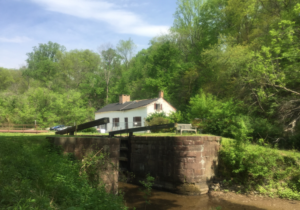
Renovations underway at Lock 21.
Furnishing the Past
How does one identify and locate period furnishings? C&O Canal Trust volunteer Robert Mertz is applying his expertise at Swains. He begins by considering the story of the lockhouse and how it fits into park history. Then he works with space, amenities, occupancy, and budget to plan the interior.
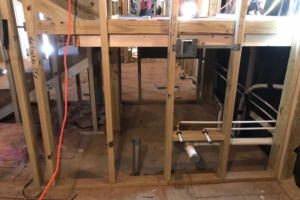
Interior framing for Swains lockhouse kitchen. (Image: Robert Mertz)
Hunting Down History
Robert relies on experience, serendipity, and the generosity of others’ expertise to find furnishings that are “solid, reasonably priced, and durable.” It is often a lengthy process, in which he “spends a lot of time and put[s] a lot of miles on the car.” He visits antiques dealers and estate sales around the Mid Atlantic. The items in Canal Quarters lockhouses must meet his goals of being as authentic as possible and allowing visitors to feel like they are back in time.
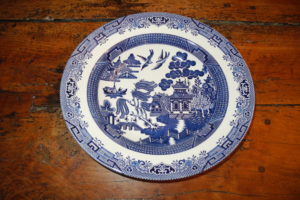
Blue Willow china is used in Canal Quarters lockhouses. (Image: Love to Know Antiques)
Canal Quarters Successes
Robert has worked on lockhouse furnishings from the 1830s up to the 1950s, networking and searching for pieces. The wooden Civilian Conservation Corps (CCC) chest in Lockhouse 10 was found at an estate sale and originally belonged to a George Washington University graduate who served as a doctor at a CCC camp in Pennsylvania. To locate the kitchen sink brackets for Swains, Robert called six different companies, checked eBay and Etsy, and finally found them at an antiques dealer in Virginia. As he observes, “All these bits and pieces have stories.”
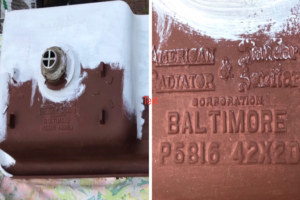
Authentic early 20th century cast iron sink with porcelain overlay. (Images: Robert Mertz)
Special Touches for Swains
Robert has been consulting closely with Bert Swain, a C&O Canal Trust board member who grew up in Swains Lockhouse, to ensure authenticity in the furnishings he selects. His goal is to strike a balance between historical details and modern conveniences; some of Bert’s memories can be incorporated into the design, others not. For example, when the Swains lived there, there was no running water, just a spring with a tap that fed into the kitchen sink. The rehabilitated lockhouse will have running water and will be hooked to a septic tank.
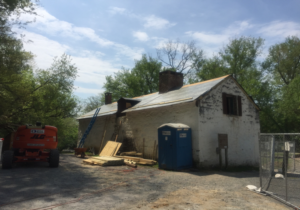
Rear view of Swains renovations.
The new kitchen design will reflect this balance, including an antique cast iron sink with porcelain overlay, soapstone counters, and period-style custom cabinets. The kitchen will also include a reproduction stove and a fridge faced with a Shaker style door panel, in the late 19th century-early 20th century style.
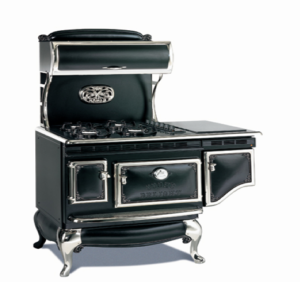
Reproduction stove for Swains kitchen. (Image: Elmira Stove Works)
Living History
When complete, Swains Lockhouse will offer guests the experience of living in 1916 through its design, furniture, and accessories. Robert Mertz comments that, “The magic of the Canal Quarters program is unique in this country in terms of restoring old buildings and letting people stay in them overnight. People really enjoy it!”
Author Christine Rai is a college professor in the Washington, D.C. area with a passion for culture, food studies, and experiential learning. She blogs about food, travel, and teaching at www.christinerai.com.





